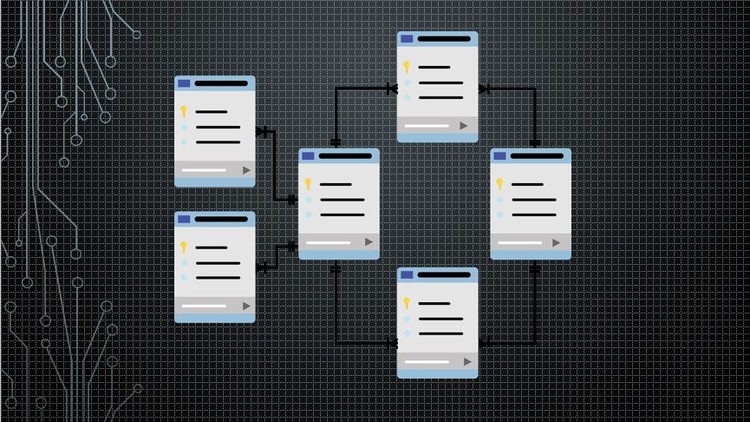Mastering SQL Query With SQL Server
- Description
- Curriculum
- FAQ
- Reviews
This Course cover first two modules of 70-461 (Querying Microsoft SQL Server 2012/2014).
Topics we covered:
-
Create and alter tables using T-SQL syntax (simple statements):
-
Create tables without using the built in tools;
-
ALTER;
-
DROP;
-
ALTER COLUMN;
-
CREATE
-
-
-
Create and modify constraints (simple statements)
-
Create constraints on tables; define constraints;
-
unique Key constraints.
-
Default constraints.
-
Primary Key constraints.
-
Foreign key constraints
-
Not Null constraints.
-
Check constraints.
-
-
-
Query data by using SELECT statements:
-
Use the ranking function to select top(n) rows;
-
Restrict data using where conditions
-
IN Operators.
-
Between Operators.
-
Like Operators.
-
Conditional Operators.
-
Combine multiple conditions using AND / OR / NOT.
-
-
Sort Data using Order By clause:
-
Sort Data ascending and descending order.
-
Restrict Sorted Data Using Offset Fetch.
-
-
-
Modify data by using INSERT, UPDATE, and DELETE statements:
-
Insert data into a table using insert statement.
-
Insert data using SQL server management studio.
-
Remove data using Delete statements.
-
Remove data using SQL server management Studio.
-
Remove data using Truncate statement.
-
Update data using Update statements.
-
Update data using SQL server management studio.
-
This course provide 30-day money back guarantee. So if you don’t like the course, you could ask for refund.
Soon will upload more videos to explain module three and four for 70-641.
-
9Different SQL Server Installation Options (Cloud and On Premise)Video lesson
-
10Install SQL ServerVideo lesson
-
11Install SQL Server Management StudioVideo lesson
-
12Connect To SQL Server by Using SQL Server management StudioVideo lesson
-
13Create Free Azure AccountVideo lesson
-
14Create Azure SQL Server DBVideo lesson
-
15Connect To Azure SQL Server DB From SSMSVideo lesson
-
16Delete Azure SQL Data BaseVideo lesson
-
17Introduction To Designing A DatabaseVideo lesson
-
18Create A DatabseVideo lesson
-
19Create Tables Inside A DatabaseVideo lesson
-
20Insert Data Into A TablesVideo lesson
-
21Insert Data Into A Tables Part 2Video lesson
-
22Retrieve Saved Data From A DatabaseVideo lesson
-
23Retrieve Saved Data From A Database Part 2Video lesson
-
24Update Records Saved in A TableVideo lesson
-
25Remove Data From A TableVideo lesson
-
26Remove Tables From A DatabaseVideo lesson
-
27Summary Of This ModuleVideo lesson
-
28Task 1Video lesson
-
29Solution For Task 1: Part 1Video lesson
-
30Solution For Task 1: Part 2Video lesson
-
31Solution For Task 1: Part 3Video lesson
-
32Solution For Task 1: Part 4Video lesson
-
33Solution For Task 1: Part 5Video lesson
-
34Solution For Task 1: Part 6Video lesson
-
35Solution For Task 1: Part 7Video lesson
-
36Solution For Task 1: Part 8Video lesson
-
38Basics Of SQL Select Statement & Derive New DataVideo lesson
-
39Literal Select StatementVideo lesson
-
40Select Distinct Data From A TableVideo lesson
-
41Select Specific Data With Where ConditionsVideo lesson
-
42How To Use In Operate In SQL Where ConditionVideo lesson
-
43How To Use Between Operator In SQL Where ConditionVideo lesson
-
44How To Retrieve Null Values Using SQL Where ConditionsVideo lesson
-
45How To Select Values From A Table That Are Not Equal To Some ValuesVideo lesson
-
46How To Use Like Operator In Where ClauseVideo lesson
In this video, you will learn how to use Like operators in SQL where Clause. The LIKE operator is used in a WHERE clause to search for a specified pattern in a column.
There are two wildcards often used in conjunction with the LIKE operator:
% - The percent sign represents zero, one, or multiple characters.
_ - The underscore represents a single character
After this video, You will learn or master to use like operator in where conditions. In this video, we will explain 20 sample queries by using like operators. So please watch full videos.
-
47Sort Data By Using Order ByVideo lesson
-
48How To Use The SQL Server OFFSET FETCH Clauses To Limit The Number Of Rows ?Video lesson
-
49What Is Constrain? How To Use It ? When We Need SQL Constrains ?Video lesson
-
50Use Of Not Null ConstrainsVideo lesson
-
51How To Use Unique Constrains Part 1Video lesson
-
52How To Use Unique Constrains Part 2Video lesson
-
53How To Use Check Constraint In SQL Server?Video lesson
-
54How To Use Default Constrains In SQL ServerVideo lesson
-
55Use Of Primary Key In SQL ServerVideo lesson
-
56Use IDENTITY Keyword To Perform An Auto-Increment Feature With Primary KeyVideo lesson
-
57SQL FOREIGN KEY Constraint (Used To Link Two Tables Together)Video lesson
-
65SQL Server String FunctionsVideo lesson
-
66Ascii Vs Char String FunctionsVideo lesson
-
67Lower & Upper String FunctionsVideo lesson
-
68Left & Right String Functions In SQLVideo lesson
-
69Ltrim & Rtrim String FunctionsVideo lesson
-
70Replace and Reverse String FunctionsVideo lesson
-
71Substring & Charindex FunctionsVideo lesson

External Links May Contain Affiliate Links read more





